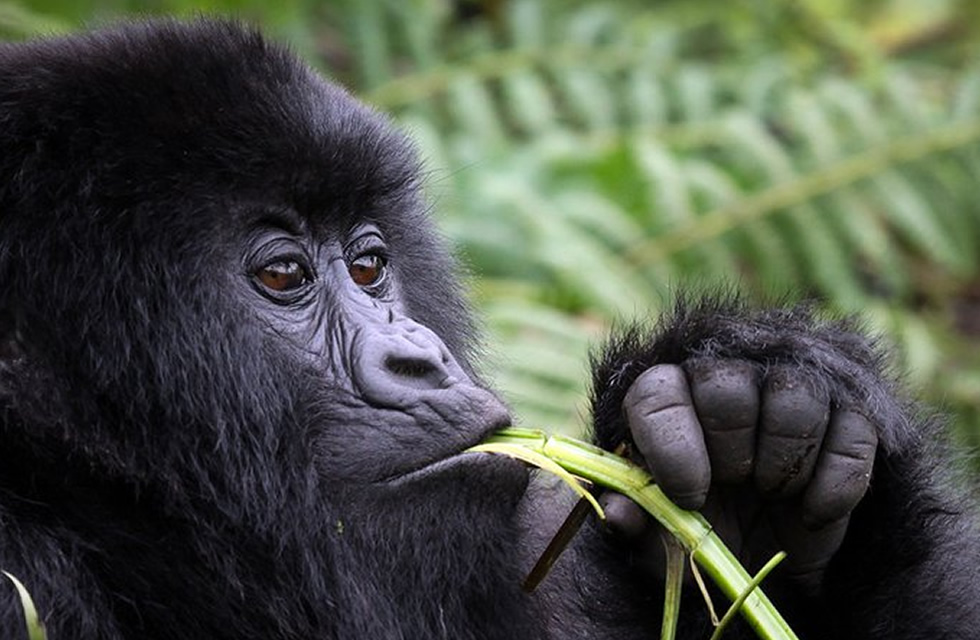Like other wildlife species, mountain gorillas have what they feed on. The composition of gorillas’ diet differs from subspecies to subspecies and seasonality. The western lowland gorillas, also known scientifically as gorilla gorilla gorilla-are a subspecies that depend on plant species. Over 67 percent of their diet is made of fruits while 17 percent is mainly leaves, seeds and stems then 3 percent is made of termites and caterpillars.
The eastern lowland gorilla scientifically called gorilla beringei graueri a subspecies that depends on plant species that make up about 104. On the other hand, mountain gorillas-scientifically known as the gorilla beringei beringei and a subspecies that depends on over 142 plant species and only 3 kinds of fruits. Over 86 percent of their diet is mainly made of leaves, shoots and stems while the 7 percent roots, 3 percent is flowers, 2 percent is fruit then 2 percent is made of snails, grubs and ants.
 Interestingly, gorillas are in position to survive because of vegetation like stems, roots, vines, herbs, trees, grasses, leaves and such vegetation has relatively low nutritional quality. They however, eat in large quantities that are also available throughout the year.
Interestingly, gorillas are in position to survive because of vegetation like stems, roots, vines, herbs, trees, grasses, leaves and such vegetation has relatively low nutritional quality. They however, eat in large quantities that are also available throughout the year.
An adult male gorilla can eat up to over 18 kilograms of vegetation each day. They rarely take water as most of them consume succulent vegetation which is composed of over half water and morning dew.
How they collect food
Gorillas use many avenues and they make the best use of their strength to break apart vegetation. The mature male however, can tear apart the entire banana tree to get the interior tender pith. They are selective while choosing forage and mostly depend on vegetation. They feed on leaves, pith, stalk or roots of specific plants but mostly depend on bamboo shoots. Gorillas use their agile lips and hand dexterity to manipulate the vegetation for a specific portion they need to eat.
These creatures don’t over exploit the area to find what to eat. They crop the vegetation in way that allows it regenerate. They have been documented using the hair on the back of their hands to help them absorb water and sucking it. The characteristic silver hair on the backs of mountain gorillas is an indication them mature adults. They are powerful creatures, huge primates with over 400 pounds compared to the females that have 200 pounds. Gorillas thrive in the jungles within Africa and they sustain their bodies with much food that they feed on each day.
The main diet of mountain gorillas is vegetation-they depend on shoots, leaves and plants. They feed on 142 varieties of plants with some insects especially ants. When they get a wild ant nest, they can break into it and feed on the ants inside. The silverback gorillas equally feed on rotting wood and small animals from time to time.
While they can also take water, in most cases finding a source of water becomes challenging and what helps them is availability of succulent plants-the bamboo usually comprises of 84% water.
They feed three times per day up to 60 pounds of food. In between, they spend part of their time resting. When it rains heavily, they rest for long period and begin searching what to feed on when the weather becomes fine. They move longer distances in search for what to eat especially during the dry season. A group is led by a mature adult male gorilla (silverback gorilla) that is charge the family.
In conclusion, mountain gorillas largely depend on vegetation-leaves, bamboo shoots, fruits that make up part of their larger diet.
